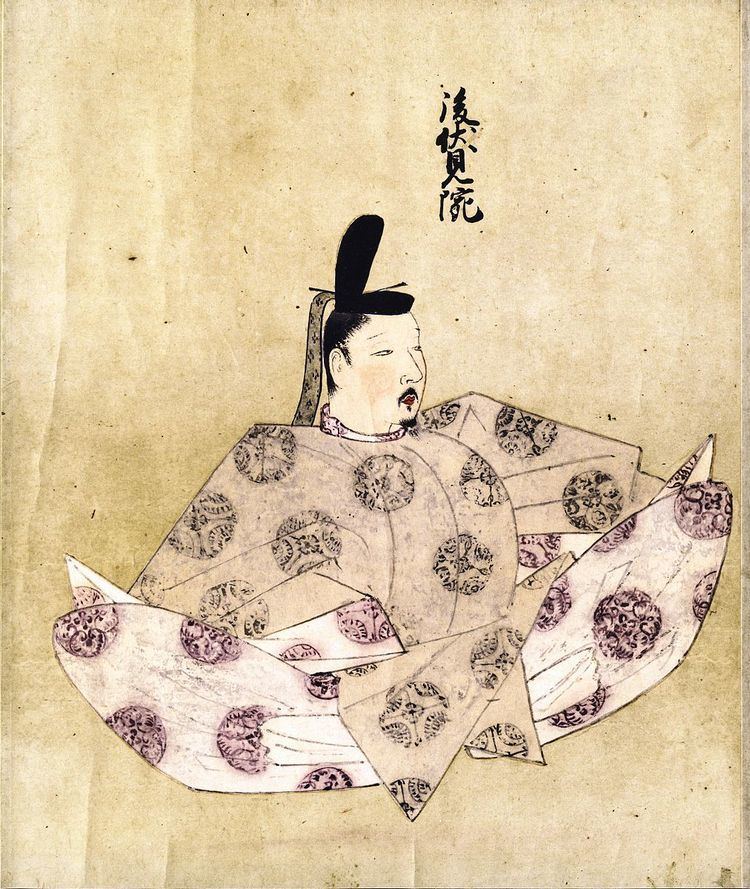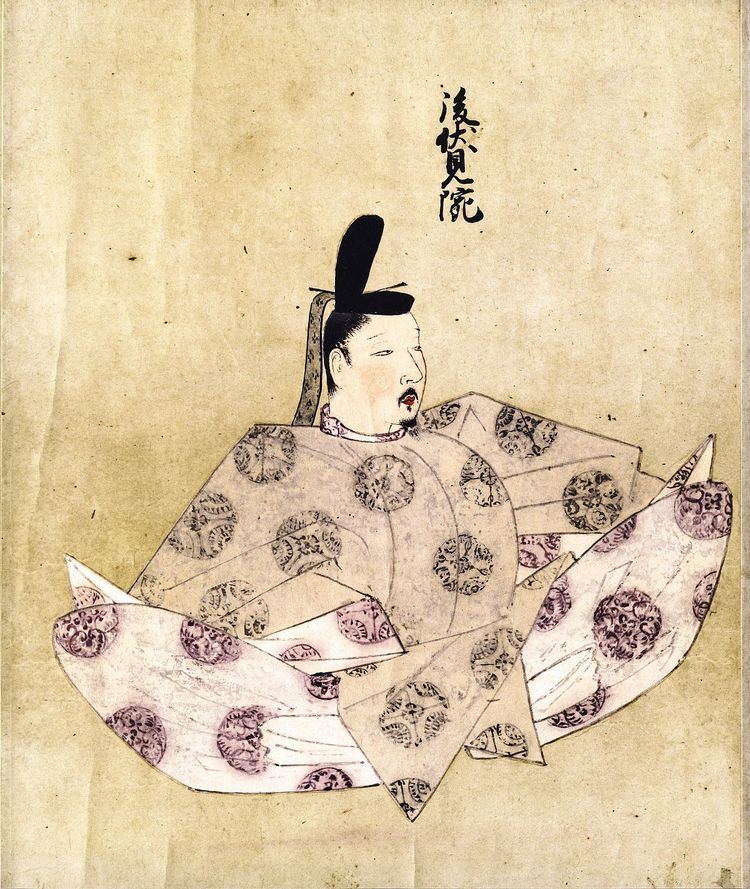Predecessor Fushimi Role Sovereign Successor Go-Nijo Died May 17, 1336, Japan | Parents Emperor Fushimi Name Emperor Go-Fushimi Grandparents Emperor Go-Fukakusa | |
 | ||
Born 5 April 1288 ( 1288-04-05 ) IssueMore... Princess JunshiEmperor KogonEmperor Komyo Children Emperor Kogon, Emperor Komyo, Princess Junshi Grandchildren Emperor Suko, Emperor Go-Kogon Similar People Emperor Go‑Daigo, Emperor Jimmu, Kakuei Tanaka, Hirohito, Akihito | ||
Emperor Go-Fushimi (後伏見天皇, Go-Fushimi-tennō, 5 April 1288 – 17 May 1336) was the 93rd emperor of Japan, according to the traditional order of succession. His reign spanned the years from 1298 to 1301.
Contents

This 13th-century sovereign was named after his father, Emperor Fushimi and go- (後), translates literally as "later"; and thus, he is sometimes called the "Later Emperor Fushimi". The Japanese word go has also been translated to mean the "second one;" and in some older sources, this emperor may be identified as "Fushimi, the second," or as "Fushimi II."
Family
Before his ascension to the Chrysanthemum Throne, his personal name (his imina) was Tanehito-shinnō (胤仁親王).
He was the eldest son of Emperor Fushimi. They belonged to the Jimyōin-tō branch of the Imperial Family.
Events of Go-Fushimi's life
Tanehito-shinnō was named Crown Prince or heir in 1289.
Fushimi acted as cloistered emperor for a period, but after a while, from 1313 to 1318, Go-Fushimi acted in that function.
During Hanazono's reign, negotiations between the Shogunate and the two lines resulted in an agreement to alternate the throne between the two lines every 10 years (the Bumpō Agreement). This agreement did not last long, as it was broken by Emperor Go-Daigo.
Go-Fushimi was the author of a famous plea to the god of the Kamo Shrine for help in gaining the throne for his son. This plea was ultimately successful, but it was not until thirty-three years after his abdication that Go-Fushimi's son, Emperor Kōgon became emperor. Kōgon was the first of the northern court emperors backed by the Ashikaga shogunate.
Emperor Go-Fushimi is enshrined with other emperors at the imperial tomb called Fukakusa no kita no misasagi (深草北陵) in Fushimi-ku, Kyoto.
Kugyō
Kugyō (公卿) is a collective term for the very few most powerful men attached to the court of the Emperor of Japan in pre-Meiji eras. Even during those years in which the court's actual influence outside the palace walls was minimal, the hierarchic organization persisted.
In general, this elite group included only three to four men at a time. These were hereditary courtiers whose experience and background would have brought them to the pinnacle of a life's career. During Fo-Fushimi's reign, this apex of the Daijō-kan included:
Eras of Go-Fushimi's reign
The years of Go-Fushimi's reign are more specifically identified by more than one era name or nengō.
